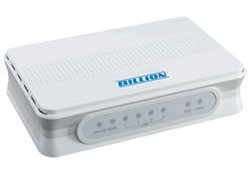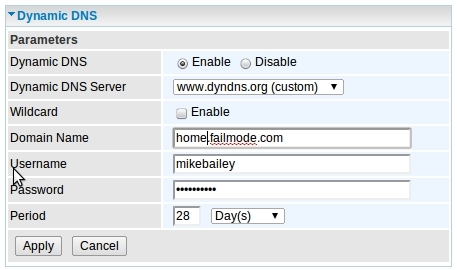host@home: Setting Up Your Network
[2013-12-19 I’m not currently hosting @ home but Snowden leaks have made me rethink]

My first step on the path to hosting @ home was to get a good Net connection. I selected a Naked ADSL plan from Australian provider Internode. Australians pay crazy high prices for Internet but $60 a month for 150GB (combined download/upload) doesn’t seem too steep. In order to host @ home I needed to disable the Internode network firewall to enable incoming traffic.
Internode gives me a dynamic IP (which I actually prefer). Most DSL routers come with support for dynamic DNS built in and mine does a great job of updating my DNS entry within seconds of my IP changing. All other domains hosted here will have CNAMEs pointing this host only a single hostname needs to be updated when my IP changes.
When my modem light glowed steady on Friday I knew I could get started configuring the router. I’m fond of Billion modem/routers which sell for around $60.
Configuring the router
ADSL Routers tend to be pretty easy to configure via their web interface providing you remember the admin password or have something to poke in the hole to reset it to factory defaults. The other thing you have to work out is the IP address the modem is running on. For some reason 192.168.0.1 is not the universal standard - my modem was on 192.168.1.254. Go figure. Here’s what I do when setting up a new host@home network.
- Change root password from the factory default
- Configure DHCP to handout my ISP’s nameservers and my own domain
- Configure DHCP to IPs from 100 - 200 (I reserve others for manual addressing)
- Forward incoming connections to a gateway IP (which forwards traffic using HAProxy)
- Configure dynamic dns

I installed apache2 on my gateway host to test external access. You should be able to access it here: home.failmode.com
In the next installment…
The next post will cover setting up HAProxy on the gateway host to so that incoming requests can be routed to the correct internal servers.